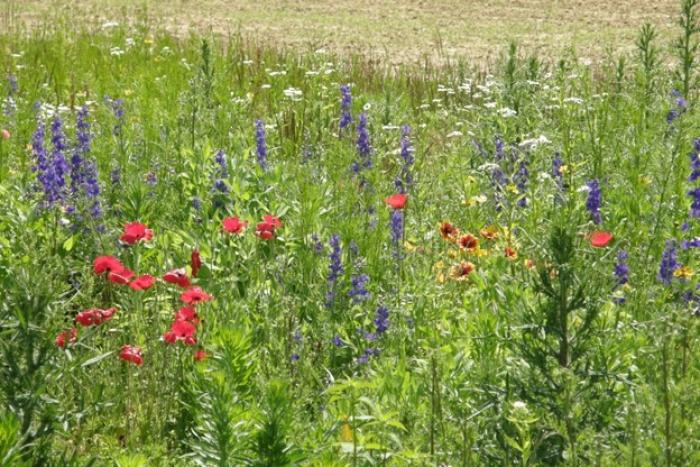Improving Pollinator Habitat with Plant Materials Program Information
Information produced from studies and trials conducted by the Plant Materials Program help planners and the public establish pollinator habitat.

Selecting appropriate plant species and varieties for pollinator habitat enhancements is critical to match plants to the site and desired goals for the planting. NRCS Plant Materials Centers across the country have information to help conservation planners and the public choose the correct plants. Here are a few examples of information available from Plant Materials Centers in the Northeast.
The New Jersey Plant Materials Center (NJPMC), in Cape May, New Jersey, developed Technical Note Number 3: Persistence, Spread, and Pollinator Value of Commonly Recommended Pollinator Plant Species on the Coastal Plains of the Mid-Atlantic Region as a summary of findings from several pollinator plants studies and projects based at the NJPMC.
New York Plant Materials Center (NYPMC), in Corning, New York, examined over 50 native species of wildflowers and species mixes from 2009-2016 and developed the Use of Wildflowers in Native Grass Seeding Mixtures to Enhance Pollinator Habitat report and Planting for Pollinators and Beneficial Insects New York Wildflower Habitat Establishment Guide that provides recommendations for the development of appropriate seed mixes for establishment of pollinator habitat. The NYPMC also published Ease of Establishment and Persistence Ratings for Various Wildflowers, After Four Growing Seasons and Germination Studies for Various Wildflowers to further support pollinator conservation.

Additionally, the NYPMC has provided over 3,000 seedlings of various species of wildflowers to establish a People’s Gardens at NRCS field offices in New York and Pennsylvania for educational and outreach activities. These plantings also provide wildflower plant identification training for NRCS field staff. The information from these Plant Materials Program resources can be used by conservation planners and partners to assist with species and variety selection for NRCS Conservation Practice Standards such as Conservation Cover (327), Critical Area Planting (342), Filter Strip (393), and Wildlife Habitat Planting (420).
For additional information on specific species of plants mentioned in the document links, please see the USDA PLANTS database. Technical information and guidance on the use of conservation plants to address resource concerns can be found on the Plant Materials Program website or contact the nearest Plant Materials Center or plant materials specialist.

